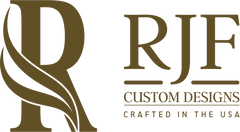One of the most misunderstood and confusing topics as it relates to cutting boards and wood grain orientation.
The main difference between end grain, edge grain, and flat grain cutting boards lies in the orientation of the wood grain and how the board is constructed. Each type of cutting board has its own unique characteristics, advantages, and disadvantages.
- End Grain Cutting Boards:
- Construction: End grain cutting boards are made by arranging small wood blocks or "end" pieces of wood with the grain facing upward. These blocks are then glued together to form the cutting surface.
- Appearance: The end grain surface creates a checkerboard-like pattern, which many people find visually appealing.
- Durability: End grain boards are highly durable and forgiving on knife edges. When a knife blade makes contact with the board, it tends to slide between the wood fibers rather than cutting across them, which helps maintain the sharpness of the knife.
- Knife-Friendly: As mentioned, end grain boards are gentle on knives, reducing the chances of premature dulling.
- Maintenance: They tend to self-heal to some extent because the knife marks close up slightly due to the nature of the end grain structure.
- Cost: End grain cutting boards are often the most expensive due to the labor-intensive construction process and the quality of wood used.
- Edge Grain Cutting Boards:
- Construction: Edge grain boards are made by arranging long strips of wood with the edge grain facing upward and then gluing them together to form the cutting surface.
- Appearance: Edge grain boards have a linear, striped pattern due to the long strips of wood used.
- Durability: They are less forgiving on knives compared to end grain boards, but still gentler on knife edges than flat grain boards.
- Knife-Friendly: While not as knife-friendly as end grain, they are a good compromise between the durability of flat grain and the knife-friendliness of end grain boards.
- Maintenance: Edge grain boards require regular oiling and care to prevent drying out and cracking.
- Flat Grain Cutting Boards:
- Construction: Flat grain cutting boards are made by gluing large planks of wood together side by side to form the cutting surface.
- Appearance: The surface features a consistent pattern since it's made from large planks of wood.
- Durability: Flat grain boards are generally less durable than end grain and edge grain boards, and they are more susceptible to knife marks and warping.
- Knife-Friendly: They are the least knife-friendly option, as the knife blade comes into direct contact with the wood fibers, causing more wear on the knife edge.
- Maintenance: Flat grain boards also require regular oiling and maintenance to prevent damage and maintain their appearance.
In summary, end grain cutting boards are the most durable and knife-friendly, but they are also the most expensive. Edge grain boards strike a balance between durability and cost, while flat grain boards are more affordable but less durable and not as gentle on knives. The choice depends on your budget, aesthetic preferences, and how much emphasis you place on knife longevity.
